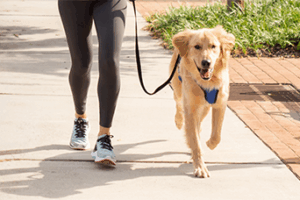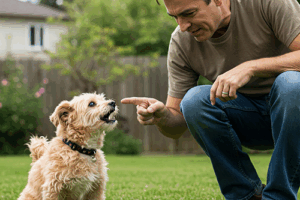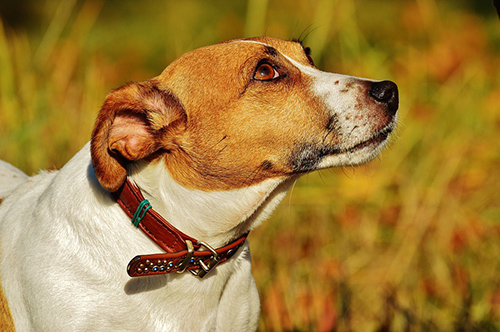
When it comes to purchasing your dog a collar, harness, or leash, there are plenty to choose from. Puppies should start with a simple collar and leash. However, if your puppy is still young, there is a chance you have not taken him on a walk with a leash or collar as yet. Therefore, the first thing to do is to get him comfortable with the feel of a collar and walking on a leash.
Generally, throughout the life of your dog, you’re probably going to buy 2-4 collars, depending on how fast your puppy grows.
What type of collar should I purchase?
Collars come in all types of sizes and styles, which serve a variety of purposes. The following four options are good choices; however, I recommend one of the first two.
- Simple collar: this is one of the most common dog collars you can buy. It connects with a clip or buckle, and it is flat. Personally, I believe this is the most exceptional starter collar for your puppy. If your puppy is ok with walking on a leash without pulling, you can stay using the simple collar.
- Martingale collar: This collar is my all-time favorite dog training collar. Thanks to the design, your puppy will not be able to slip out. Gently, it tightens around your puppy’s neck when he begins to pull on the leash, which is a great way to inspire loose leash walking.
- Choke collar: This is a collar that I cannot recommend. It is very harmful to dogs if inappropriately used, which happens most of the time. Too often, I see people pull extremely hard on the collar, which can hurt the dog’s neck. Dog’s respond rather well to a mild jerk on their collar rather than a choke. Avoid these collars if you can.
- Prong Collar: These collars are another type that I do not recommend. Pinching your dog is not the right way to teach him how to walk correctly on the leash. These collars are not very useful. The pinching sensation the dog experiences can cause aggressive behavior because they associate the feeling with another animal or dog trying to harm them. Therefore, with the many other collars on the market, there is no reason for a prong collar.
Unfortunately, too many dog owners overlook harnesses. Harnesses are among the best tools to teach your puppy how to walk on a leash properly. No matter what I did, my dog Mello always pulled on the leash as a puppy; however, the moment I introduced a harness, things got a lot better. Harnesses are a great tool to help with pulling, which aids in relieving pressure off the puppy’s neck. Also, they give you control over the dog’s entire body. Harnesses are amazing!
What type of harness should I buy?
Harnesses come in two primary varieties: the ones that are chest-led and the ones that clip onto the dog’s back.
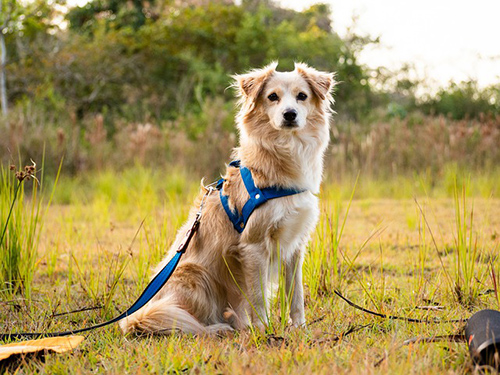
- Chest-led harnesses: This type of harness is among the most effective. It gives you directional control over your puppy and eliminates the ability for your pup to pull you. The leash connects to a ring that connects to a double-martingale on the chest. This design discourages pulling, and in turn, directs your puppy back to you.
- Back-clipping harnesses: This design allows for a leash to attach to a ring on the dog’s back. These harnesses are a great tool, depending on your dog. The one negative about this harness is that it does not permit you to have complete directional control and is not very useful in adjusting your puppy’s pulling problems. Although your puppy wouldn’t be able to pull as much as with a collar, he surely can pull more than he could with the chest-led design. However, if your puppy does not have pulling issues and you’re just looking to lessen pressure off his neck, this is the perfect harness for you.
There are two primary varieties when it comes to leashes, which are standard and retractable. The standard leash is what I use and recommend for all puppy and dog owners.
What are the differences between the two types?
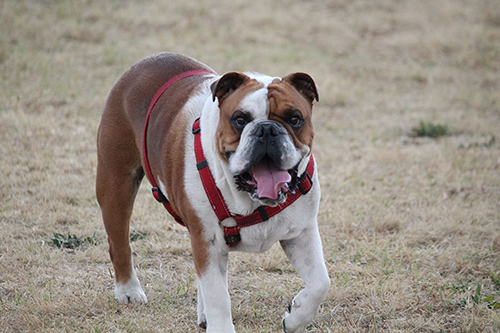
Manufacturers usually produce standard leashes using nylon and, on some occasions, leather. They characteristically range from 4-8 feet long and connect to your puppy’s collar or harness. Here are some guidelines for selecting the right standard leash:
The leash you choose should be no longer than 6 feet long.
- The reason is that it gives your puppy ample slack to walk correctly on a leash; however, it does not allow your pup enough room to have the freedom to roam around as he likes. For the most part, leashes that are 4 feet long are my favorite.
Choose a handle that feels right in your hands.
- You will be holding this leash for quite some time; therefore, you want to make sure that it won’t be painful holding for extended periods.
- Sometimes the comfort of the handle depends on the materials, size, and a person’s hands.
I highly discourage any dog owner from considering retractable leashes. These leashes have large plastic handles that can retract long nylon cords.
Retractable leashes are in no way beneficial in training your puppy and can cause harm to you and your pet. Plenty of scary stories exist about how people injured themselves as well as their dogs when using theses leashes.
Regrettably, too many dog owners do not know the dangers of using these leashes, but they are still prevalent to this day. Here are some reasons why I can’t entirely agree with the use of retractable leashes:
They do nothing to train your dog on how to walk on a leash the right way.
- Retractable leashes confuse dogs because of the changing distances they’re allowed to go. Your dog will always test the leash’s limits, which encourages him to pull.
These leashes allow your dog too much freedom to roam.
- When training on a leash, the primary purpose is to keep your dog close.
Retractable leashes pose a potential danger to you.
- Rope burns, as well as sliced hands, are a regular occurrence for those that attempt to grasp onto the leash.
- The nylon cord is thin enough to slice into your skin with ease, which can be excruciating.
Retractable leashes are also dangerous to your puppy.
- Your puppy will always be in danger of getting tangled up in the cord.
- If your puppy becomes tangled and tries to pull away, the rope will tighten even more, which will lead to a potentially serious injury.
- Also, if the rope becomes tangled around your dog’s neck, there is a potential for death.
These are the reason I say stay as far away as possible from retractable leashes. There is nothing beneficial that comes from them.

